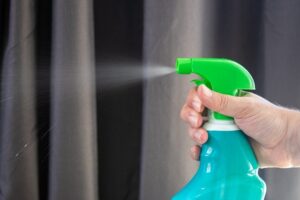Mitigation & Prevention of Disease in the Workplace
 There are many infectious diseases that are spread through the workplace. After all, you’re spending a major chunk of your day there, so there is a high chance that you may contract a virus if you come in contact with an infected person or surface.
There are many infectious diseases that are spread through the workplace. After all, you’re spending a major chunk of your day there, so there is a high chance that you may contract a virus if you come in contact with an infected person or surface.
When workplaces are infected or contagious, it means there is a lack of adequate sanitization there. In recent times, especially with the onset of COVID-19, sanitization for workplaces has become even more important. Since Covid-19 has a rapid speed of transmission and lingers on surfaces, businesses need to take stringent measures to mitigate and prevent the spread of disease in the workplace.
Otherwise, you’ll end up with high employee absenteeism, higher costs spent on employee healthcare and reduced productivity.
Tips to Mitigate and Prevent Disease in the Workplace
Although it is important to take care of your health, this becomes even crucial at work. Businesses can’t afford employees taking sick leaves often, which makes mitigation and prevention of disease in the workplace of imperative importance.
For this reason, we have compiled 5 tips that will help stop or at least reduce the transmission of infectious diseases and infections at the office.
1. Educate Employees About Healthcare
The first step to ensuring the disease prevention measures are followed is educating employees. A workplace should hold online or in-person sessions to tell employees how viruses are transmitted at work. Tell them how they are at risk. Then establish some rules that will help curb the spread of diseases. To stop infections from spreading, employees need to take care of themselves, which they will be able to do with the relevant knowledge and awareness.
Tell employees that if they develop flu-like symptoms, they should switch to remote work, which should be an option provided by workplaces. Affected employees should then get tested and return to work only after their COVID-19 test is negative.
2. Make Face Masks Mandatory
In the wake of the recent pandemic, employees should be urged to wear face masks at all times. WHO also recommends masks as part of the comprehensive strategy to limit the spread of COVID-19.
Naturally, this will also help mitigate other infections as well, especially those with a lower speed of transmission. Employees should be mindful of wearing masks, especially when they cough or sneeze, as water droplets can land on surfaces and spread the virus to fellow employees.
3. Install Sanitizer Dispensers
Research shows that most viruses are transmitted from infected surfaces and persons. Employees often shake hands with fellow employees as a way of greeting or come in contact with an infected desk surface and then use the same hands to transport germs to our eyes, nose, and mouth.
Employees often get lazy about going to the bathroom to wash their hands. To prevent this problem, workplaces should install sanitizer dispensers in various parts of the office. When these sanitizer dispensers are in close proximity, it would be easier for people to sanitize their hands and rid them of germs.
4. Take Care of Standing Water
Several water-borne diseases like typhoid, cholera, dengue, diarrhea, and hepatitis can prove detrimental to a person’s health. While this often goes unnoticed, workplaces should be more proactive with water damage on their property or building due to basement flooding, a pipe burst or others.
Water damage can also lead to mold growth, which is a precursor to a host of allergies and respiratory diseases. To prevent water-borne diseases, workplaces should conduct regular inspections of their commercial property. They should also get water damage restoration services to limit further damage to their property and employees.
5. Sanitize and Disinfect High-Touch Surfaces
As mentioned before, a host of diseases spreads through high-touch surfaces. This also includes COVID-19, which has claimed thousands of lives since its inception. While hygiene and cleanliness at the workplace have always been important, it has become even more crucial in the wake of the recent pandemic.
People need to understand that there is a huge difference between cleaning and sanitizing. While cleaning may remove dirt or impurities from surfaces, sanitization helps get rid of or at least lower the number of germs on a given surface. Sanitization is as close as you can get to matching public health standards, so don’t think just regular cleaning will help mitigate or prevent disease.
Given the spread of COVID-19, every workplace should invest in sanitization services that will curb the spread of the virus through high-touch surfaces like doorknobs, light switches, faucets, desks, elevator buttons, phones and keyboards. This will effectively lower the speed of transmission of the virus.
911 Restoration of Baltimore
If you run a business in Baltimore, you can find sanitization facilities that will help mitigate and even prevent disease in the workplace. In the wake of COVID-19, sanitizing and disinfecting offices has become very important. This helps to ensure that fewer employees catch the virus and fall sick.
911 Restoration of Baltimore provides expert sanitization and disinfection solutions for homes and offices. This will help you create a safe space for yourself and all your employees.



